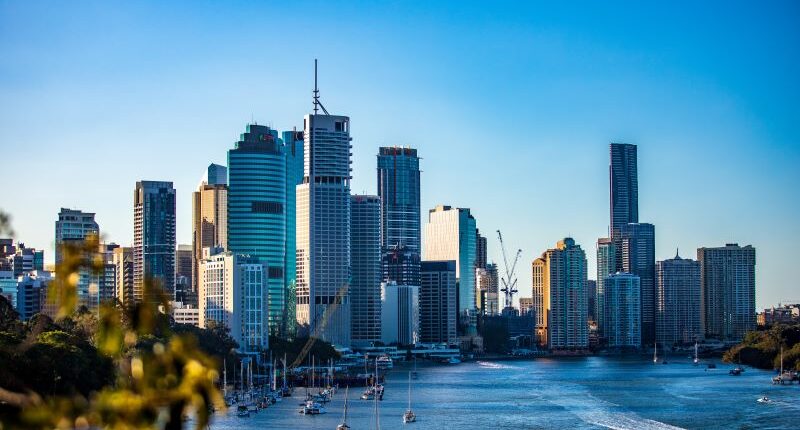- Rising rents squeeze hip pockets of renters in QLD, SA, and NSW.
- Canberra recorded the lowest scores on Suburbtrends' Rental Pain Index.
- All states, except the territories, saw rental stress present.
The rental crisis continues to bite down hard on tenants around Australia, with Suburbtrend’s latest Rental Pain Index showing all states, except for the territories, saw average rent, as a percentage of income, above 30% – a figure that typically indicates rental stress.
The hardest hit states were Queensland (QLD), South Australia (SA) and New South Wales (NSW).
Kent Lardner, founder of Suburbtrends said QLD not only leads the pack in terms of rental pain but also boasts the largest average 12-month rental increase at 16.33%.
“The significant increase in rental prices over the past year in QLD is a clear contributor to the heightened rental pain felt by residents,” said Lardner.
“Similar trends are observed in SA and WA, where rental prices have risen by approximately 15.95% and 15.37%, respectively.”
The current rental market is also varying considerably across the different capital cities, according to Lardner.
“Interestingly, the Australian Capital Territory (ACT) and Tasmania (TAS) were found to have the highest average percentage of advertised rentals, suggesting a high turnover of rental properties.”
Kent Lardner, Founder of Suburbtrends
“The ACT also has the highest vacancy rate, with over 2.22% of properties sitting empty for 21-days or more.”
This may come as a welcome surprise to Canberrans, given the nation’s capital was the most expensive place to rent in 2021.
Rental Pain Index
| State | Advertised Rentals (%) | Vacancy Rate | Average 12M Rental Increase | Average Rent (% Income) | Rental Pain Index |
| QLD | 1.61% | 0.85% | 16.33% | 37.20% | 83.69 |
| SA | 1.48% | 0.65% | 15.95% | 34.95% | 83.27 |
| NSW | 1.72% | 0.90% | 14.54% | 35.96% | 81.02 |
| WA | 1.53% | 0.79% | 15.37% | 31.35% | 79.78 |
| VIC | 1.97% | 1.00% | 9.53% | 31.78% | 77 |
| TAS | 4.05% | 2.31% | 6.40% | 34.87% | 63.02 |
| NT | 2.51% | 1.24% | 9.00% | 25.36% | 57.35 |
| ACT | 4.29% | 2.22% | 9.34% | 27.53% | 54.02 |
Source: Suburbtrends
Worst locations for renters
According to Lardner, Deniliquin was the most under pressure location in NSW with an 18% increase in average rent over the past 12 months, with rental prices comprising 30% of tenants’ income and a low vacancy rate of 0.4%.
Following closely behind is Bankstown – North, experiencing a 12% rental increase, with tenants allocating a slightly higher percentage of their income (34%) towards rent, and a vacancy rate of 0.7%.
In Victoria, Pakenham – South East experienced an 11% rise in rental prices, with tenants spending 32% of their income on rent, coupled with a low vacancy rate of 0.3%.
The toughest location for renters in QLD was in Stanthorpe, boasting a significant 13% rental increase, with tenants allocating 34% of their income to rent thanks to a vacancy rate of 0.5%.
Strathalbyn secures the top spot in South Australia with an 18% increase in average rent. With tenants allocating 35% of their income towards rent, and a vacancy rate of 0.4%, highlighting the strong demand for rental properties.
WA has very tight vacancy rates, with College Grove – Carey Park the hardest hit renters in the state. The suburb has experienced a 23% increase in rental prices. Tenants here allocate 36% of their income towards rent, while the suburb maintains a vacancy rate of 0.8%.
The harshest location in Tasmania has been Montrose – Rosetta, with a 13% increase in rental prices. While tenants allocate 34% of their income to rent, the suburb maintains a moderate vacancy rate of 1.1%.
Coconut Grove is the toughest in the NT with an 8% increase in rental prices, with tenants in this suburb allocating 35% of their income to rent, while the vacancy rate remains low at 0.6%.
Meanwhile, Lawson in ACT experienced a 34% increase in rental prices. With a vacancy rate of 1.9% and tenants dedicating 33% of their income to rent.
Conditions can change
Despite the dire situation for many renters, Lardner said it’s important to look at the broader context.
“While these numbers give us a snapshot of the current state of affairs, it’s crucial to remember that the rental market is complex and ever-changing.”
“Factors such as economic conditions, population growth, and housing policies all play a role.”








